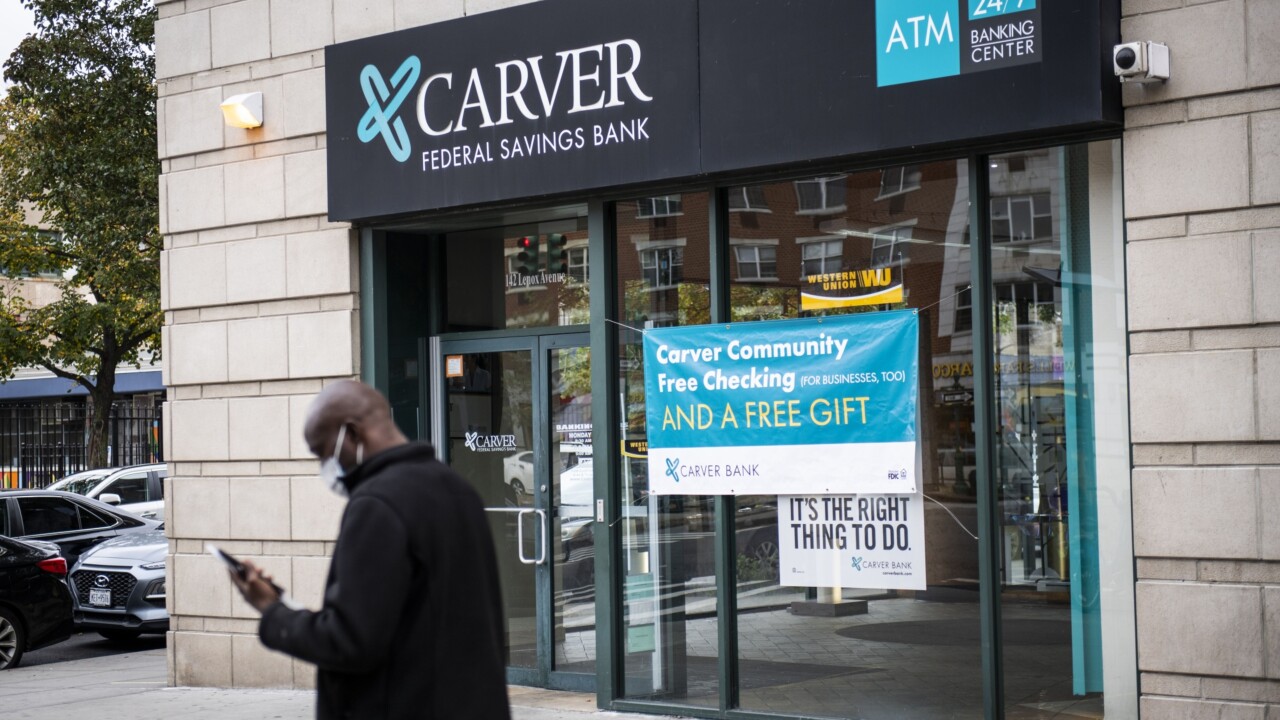MINNEAPOLIS -- The glut of capital at many banks has hindered Norwest Corp.'s ambitious plan to securitize commercial loans.
The goal of Norwest's securitization program, .called Norwest Loan Partners, is to buy excess concentration in nonguaranteed business loans from other midwestern banks that don't want to carry the risk.
Norwest would pool the loans and sell them, possibly in the form of a mutual fund, to participating banks.
The program is believed to be the first attempt by a bank to pool and securitize these often lucrative loans.
When Norwest officials rolled out the program last spring, they confidently predicted that roughly 40 banks would participate.
So far, however, only one unidentified bank has signed on. Another is expected to bite this week. But the numbers projected by Norwest officials last April have not yet materialized.
Norwest officials downplay the languid response and say there is no timetable on the project.
"It's moving forward, albeit a little more slowly than what was originally thought," said spokeswoman Patrice Vick.
Executive vice president Richard Westergaard, who declined to be interviewed for this story, has said the next few months will determine the future of the program.
The reason for the stunted start-up, analysts say, is more a matter of timing, and a misjudgment of the market, than any problems with the product itself.
When Norwest began planning the Loan Partners program, banks were struggling with tight capital and were eager to get loans off their books.
Securitizations of mortgages, credit card debt, and auto and mobile-home loans had already met with raging success. So when the Minneapolis superregional developed a program to take excess concentration in sometimes risky small-business loans off bankers' hands, it seemed a natural.
Since the rollout, however, interest rates and credit quality have both risen, and many banks now find themselves overcapitalized. Bankers who once indicated they would participate in the program have decided instead to bang on to those assets.
"The tables turned very quickly," said Steve Schroll, senior banking analyst at Piper Jaffray Inc. in Minneapolis. "Before banks needed capital; now they have too much of it."
"Small-business loans are gold," he added. "It's one of the more lucrative parts of the lending business today, so banks are reluctant to give them up."
Loan Partners utilizes a computerized analytical model, which duplicates the risk ratings of loans already in Norwest's portfolio, to decide within a day or two whether it will buy the amount of the loan over the originating bank's loan concentration limit.
If a small or midsize manufacturer wants a loan of $15 million but his bank only feels comfortable lending $10 million, the customer can still get the higher amount if Norwest's computers and managers agree. Then the originally lending bank would sell the excess $5 million to Norwest.
Norwest places that money in a pool with other, similar loans. Once there is enough in the pool, say $100 million, Norwest plans to either sell securities or create something like a mutual fund that will sell shares to participating banks.
Originating banks are expected to carry at least 65% of the entire transaction, which cannot exceed $50 million. They also are expected to screen potential borrowers, using a weighted average of four separate credit worthiness tests: cash flow, leverage, profitability, and working capital.
Loans that pass those hurdles have a 75% chance of approval, Mr. Westergaard said in an interview earlier this year.
For its part, Norwest says it still expects to reach its goal but later than anticipated. If that doesn't happen, the bank says it will be no great loss, because Norwest doesn't have much invested in the program.
"Securitization of small-business loans makes a lot of sense," said Mr. Schroll. "It is a product that will have its day. It just may not be the fight product for right now."
Mr. Engen is a freelance writer based in Minneapolis





